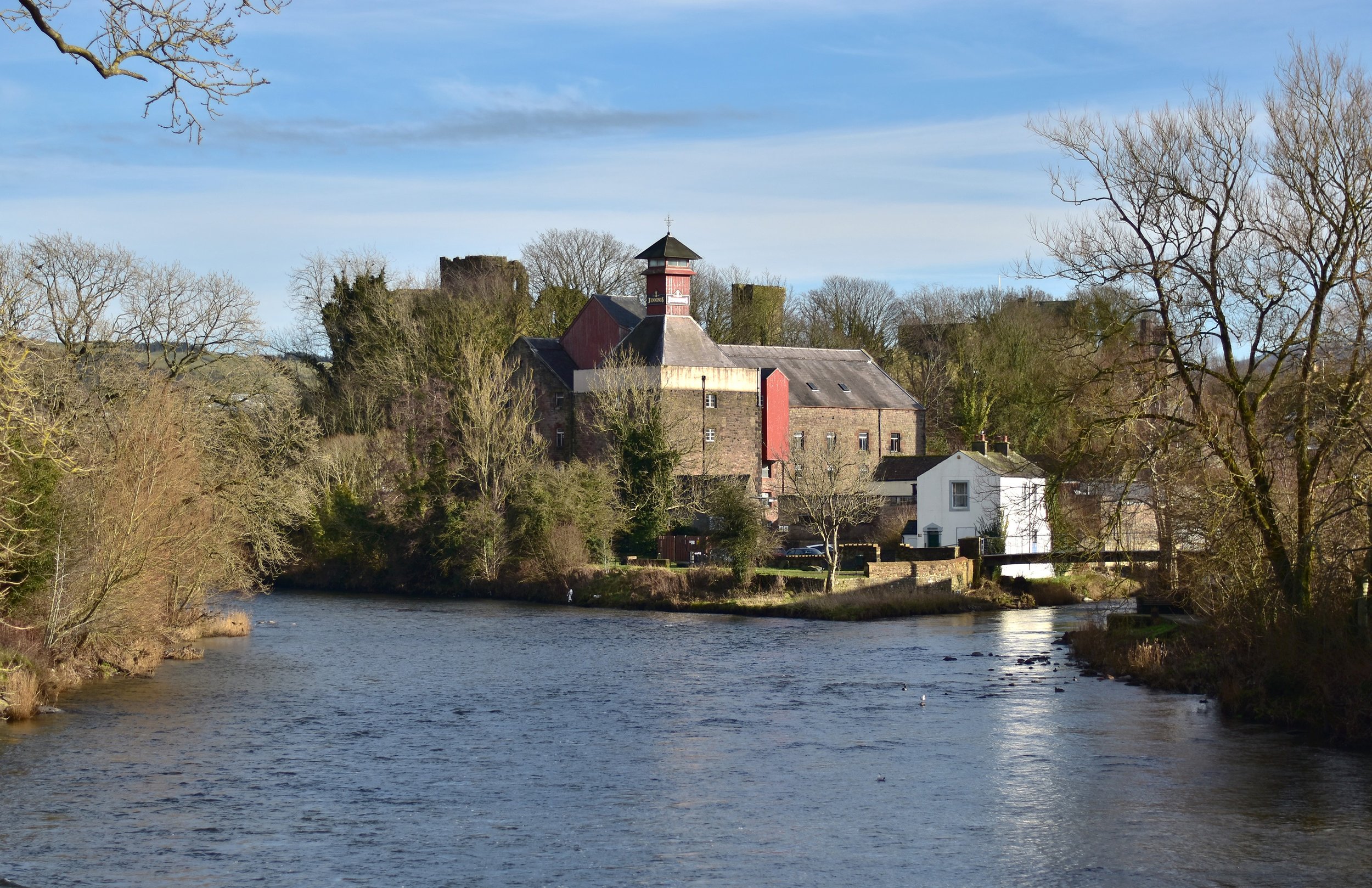Beer, Pizza and Reforging Digbeth in the City of a Thousand Trades
Sadly, since this article was published Dig Brew Co. has closed down. Digbeth, however, remains a vibrant area within central Birmingham that is well worth visiting.
***
River Street—named for its proximity to the Rea—is deathly quiet on a drizzly Friday lunchtime. The stretch of water, which flows about 10 minutes walk eastward of Birmingham city centre, augments the pronounced cold edges of the rugged red brick buildings that surround it. As does the brisk February breeze rifling through the backstreets in an area once known as the world’s workshop.
Photography by Jack Spicer Adams
A scattering of small businesses—a furniture workshop, an electronics store and a 3D candy printer—sit among graffiti tags, metal shutters and numerous “To Let” signs. Stepping over a cobbled pathway in Birmingham’s historic manufacturing district, I arrive at Dig Brew Co. It’s the area’s first and only craft brewery and a new cornerstone of an area undergoing widespread renewal.
Owner Oli Webb is running errands and, hence, running late. “Go on in, the brewers are there. Watch the cement,” he tells me over the phone. I sidestep the hardening puddles in the entranceway, into the brewery, taproom and in-house pizza restaurant, Dough—a modern British bazaar.
Like many working taprooms it appears the architects were gifted with the foresight to know someday, after the British manufacturing boom was over, brewers would eventually move in. High ceilings for fermentation tanks, metal girders as makeshift lighting fixtures, a translucent roof, and that weathered feel drinkers have become accustomed to when transitioning from cushioned bar stools in cosy pubs, to wobbly benches in bare-bones tap rooms off the beaten track.
““It’s nice to say to people Birmingham is not shit anymore.””
This is Digbeth. Things have been made here for around 1,000 years. From leather and weaponry to Typhoo tea and Bird’s eggless custard powder. Great beer and pizza are among the evolutionary steps of an area that—following a mid-20th century downturn and a reputation as a dangerous part of town—is offering a home to the new creative industries, plus a vibrant arts and music scene.
“It’s ideally suited to the regeneration it’s going through,” David Glenwright, a local historian and director of the Great British Beer Festival Winter, which currently calls Birmingham home, tells me. “It was a region originally built out of a need for manufacturing and fostered a coming together of so many different industries. Birmingham isn’t famous for one thing, it’s a city of a thousand trades and beer is such a wonderful fit in that.”
It’s a spirit the team at Dig Brew, which opened in September 2017 in an old handle factory, are keen to keep alive.
“What we bring to the area is the integrity of manufacturing, because you’ve physically had to move yourself to where the beer is brewed,” says Oli the 28-year-old owner, and art school graduate. “We’re trying to connect people to the labour going on around them.”
“Beer is important. It’s a privileged position to have, being the local brewer. If a place doesn’t have one, is it really a place? When I think of Manchester, Leeds and London, those cities’ breweries infect that region with their message,” he continues. “Personally, I love the idea of spaces where community and culture can be expressed. These people know each other, they are a community of people bound together by their interest in this product.”
My trip to Dig Brew Co. provides a window into the day-to-day travails many young brewing operations face. A broken pump left two-man brew team Andrew Whyte and Mark Davies fighting to be done for the weekend; their task unaided by a delivery lacking the necessary volume of vodka (for sterilisation, not drinking purposes). Oli is picking up equipment that would have taken days to deliver, hunting down vanilla for a stout (via his grandma’s), fixing a draught beer line for a customer and, finally, stepping in to conduct a brewery tour. It had been cancelled, but one couple didn’t get the memo.
It’s evening when we finally turn on the tape recorder, but when there’s pizza and beer this good, I’m not exactly checking my watch. I’ve relished a heavily-fruited sour beer called California. It’s made with 200kg of peach and pineapple puree and 900 litres of passion fruit concentrate that offers an eye-opening explosion of tartness after each sip. The sharpness of the ripened fruit aroma seems almost like waking from a nap beneath the tree it fell from.
How To Cook A Wolf 2, a New England IPA, might be my favourite. The London Fog yeast strain leaves some residual sweetness in a juicy ale where the pungent tropical fruit aroma is provided by, unmistakably, Citra hops. “The Citra was packaged in late November and we brewed the beer in early December,” head brewer Andrew Whyte tells us. “You could smell them across the brewery when we opened the bag.”
As light fails, the taproom is filling-up, mainly from the nearby tech and media start-ups, who’ve taken up residence in the old Custard Factory, or the art studios and galleries. Dough is already balling, both in the traditional and modern parlance.
“I see Birmingham a lot differently, having grown up here,” says pizza chef Natalie Wagstaff, raised four miles away in King’s Heath. “I have a love for Digbeth because it’s one of the few places left that are untouched.”
“See over there where the pizza oven is? A bomb hit the floor during the second World War. You want to hold onto that history. I don’t think a Wetherspoons would work here.”
Having already demolished a pizza she’s crafted, I agree. Named Bridgette, it has a white base, stilton, creamy dolcelatte, a house cheese blend, and is finished with toasted almonds and a little honey-aided sweetness. The crust is miraculously thin and crispy, perfectly toasted.
“I come from a fine dining background, but I’ve come to love pizza” Natalie adds. “It’s so humble and deceivingly simple, but it can be some of the best food you’ve ever eaten.”
Bridgette was joined by Dig Brew’s Sports Day, a traditional, easy-drinking German Dunkel, brimming with roasted coffee and chocolate flavours. Beer and pizza, man.
***
First settled next to the River Rea in the 7th century, Digbeth’s name is said to derive from “Dyke’s Path.” Others say it’s “Ducks Bath.” The area was awarded a market charter in 1156 by King Henry II, founding its future as a manufacturing hub. In 1643, local smiths forged 15,000 swords for Cromwell’s Parliamentary forces. In response, Prince Rupert and 2,000 Royalists marched upon Digbeth and 17 locals were killed in the melee.
“The English Civil War literally came down the road. The Old Crown was a building that was involved in the battle!” David Glenwright enthusiastically regales. “The Rainbow, for example, was involved in a mugging and a beating in 1890 that led to the very first reference to the Peaky Blinders.”
The Old Crown is a pub on Digbeth High Street. Built in 1368, it’s the city’s oldest surviving non-secular building. It provides a stark contrast, both idealistically and aesthetically, to places like Dig Brew. And, for manager Matt Deakin, the rapid regeneration is clearly bittersweet. There is more to Digbeth than the rows of disused industrial buildings, he tells us.
“We’re looking to the future,” he says as we sit beneath timber beams in his beautifully renovated pub. “In the long run you’ve gotta think [the regeneration] is probably the best thing for the pub, but we might lose a bit of community spirit.
““We’re trying to connect people to the labour going on around them.””
“This is where Birmingham started and it just moved that way,” he adds, motioning towards the city centre. “Now Birmingham is growing back into Digbeth and the tram system could be coming back.”
The trams, in part, tell the story of Digbeth’s demise. In the 1930s, routes connecting to Birmingham city centre started to shut down, essentially unplugging it. The late history professor Chris Upton wrote of Digbeth that “at some point in the early 20th century, Birmingham decided to abolish the past.”
Finally, it is forging a new future, with the pending arrival of the UK’s new high-speed rail line, with a station in the heart of Digbeth set to kick the regeneration into overdrive.
***
It’s around 6:30pm and Digbeth is starting to liven up. People are descending upon the Digbeth Dining Club, an ever-changing hive of street food vendors nestled in a maze of an old warehouse beneath Victorian railway arches. Established in 2012, it sits amid a myriad of spectacular street art and is the cornerstone of the new, revitalised Digbeth.
“The pride’s back, man!” says founder Jack Brabant, who entertains around 7,000 hungry visitors each weekend. “It’s nice to say to people Birmingham is not shit anymore. There’s a massive camaraderie around letting people know that we’re all proud of it.”
“We’ve worked really hard for the last eight years to convince people to come here when the image of Digbeth has been a bit rough. It was run down and quite scary and we were practically begging our mates to come down. Now it’s the most popular area to come hang out in.”
After weaving my way through the stalls—which are pretty much the only light source—I opt for za’atar-dusted halloumi on a Kurdish flatbread packed with super-fresh peppers, herbs and slaw from the Kebab Cartel. The pride I feel in staying steadfastly meat-free amid a myriad of tempting carnivorous options is mitigated by the fried jerk chicken my mate makes an immediate beeline for. Damn, it smells good. I can’t help myself and pinch a gravy-soaked chip.
“I want this to be somewhere where your age, background or demographic doesn’t matter, there’s something for everyone,” Jack adds. “I’m an old clubber, my mum’s in her 60s and comes down every week with my autistic brother. This is a safe space for him.”
The Dining Club has become a flagbearer for the new Digbeth. True to its roots, but forward-thinking. Safe, inclusive, diverse and intent on fostering community. Yet there is still so much space and scope for other creators and makers to follow suit.
“This area is as blank a slate as you can get,” says Dig Brew’s Oli Webb. “When 80% of it is empty, every change is a really big change and that’s really satisfying to see. Being in a cool and interesting area like Digbeth, with the art galleries and the music scene, doesn’t come for free. You have a responsibility to the concept of the place.”




































